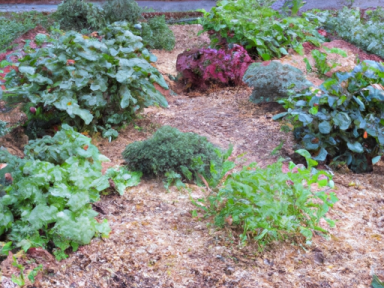Succession Planting: Ensuring Continuous Harvests for a Self-Reliant Future
In today’s uncertain world, self-reliance has become more important than ever. As homesteaders and survivalists, we understand the need to be prepared for any crisis or disaster that may come our way. One crucial skill to master is succession planting, an age-old technique that ensures a continuous supply of fresh produce for you and your family. Today, we will delve into the wisdom of succession planting and why it is essential for a self-reliant future.
What is Succession Planting?
Succession planting is the practice of planting crops in a way that allows for a continuous harvest throughout the growing season. Instead of planting all your seeds at once, you stagger your plantings to ensure a steady supply of fresh produce. This technique enables you to maximize your garden’s productivity and reduce the risk of excess or shortage.
Why Succession Planting Matters
Succession planting may seem like an added effort, but it offers several key advantages:
- Continuous Supply: By planting in succession, you can harvest crops at different stages of maturity, providing a steady stream of fresh vegetables and fruits for your family. This reduces the risk of a shortage and ensures that you have access to nutritious food year-round.
- Maximized Yield: Succession planting allows you to make the most of the growing season by utilizing your garden space more efficiently. It enables you to replant areas as soon as one crop finishes, ensuring that your soil is always productive. This way, you can get multiple harvests from the same plot of land.
- Improved Pest and Disease Management: By staggering your plantings, you minimize the risk of a pest or disease wiping out your entire crop. If one batch gets infected, the others still have a chance to thrive. Succession planting can help you maintain a healthier garden overall.
Understanding Crop Lifecycles
Before you delve into succession planting, it’s crucial to understand the lifecycles of the crops you are growing. Some plants have longer growing seasons, while others mature quickly. By knowing these details, you can plan your successions accordingly and ensure a seamless transition between harvests.
Here are three general categories of crop lifecycles:
Quick Growing Crops
These crops have short maturity periods and can be harvested within weeks of planting. Examples include lettuce, radishes, spinach, and green onions. They can be an excellent starting point for your succession plantings.
Intermediate Growing Crops
These crops take slightly longer to mature but still offer a relatively quick harvest. Examples include beans, beets, carrots, and chard. Plant these once your quick-growing crops are well-established.
Long Growing Crops
These crops require a more extended period to reach maturity and provide a harvest. Examples include tomatoes, peppers, broccoli, and corn. Plan these successions for later in the season when your other crops are approaching maturity.
Practical Tips for Succession Planting
Now that you understand the benefits and lifecycles, here are some practical tips to make your succession planting efforts successful:
- Start small: Begin with a few crops that you are familiar with and gradually expand your successions as you gain experience.
- Know your frost dates: Understanding the average last and first frost dates in your area is crucial for planning your successions accurately. Plant accordingly to make the most of your growing season.
- Keep a garden journal: Record your planting dates, crop varieties, and harvest times. This information will be invaluable in refining your succession planting schedule for future years.
- Pay attention to soil health: Succession planting can deplete nutrients from your soil faster. Prioritize soil amendment and consider cover crops to rejuvenate the soil between successions.
- Be vigilant with pest and disease control: Since your crops are in different stages of growth, monitor and address any pest or disease issues promptly to prevent them from spreading.
- Experiment and adapt: Succession planting is not an exact science. It requires observation, trial, and error to find what works best for your specific climate, soil, and crop preferences. Don’t be afraid to adapt and adjust your planting schedule as needed.
Preparing for a Self-Reliant Future
Succession planting is just one piece of the puzzle when it comes to achieving self-reliance. By mastering this technique, you are ensuring a continuous supply of fresh produce, even in the face of adversity. It’s an investment in your family’s well-being and a critical step towards a self-sufficient and resilient future.
So, what are you waiting for? Start planning your successions today and take control of your food supply. Remember, being prepared is not a paranoia; it’s a necessity in these uncertain times.
Keep learning and exploring more self-reliance skills by visiting our blog and checking out our books on homesteading, survival, and self-reliance. Together, we can build a community prepared for whatever the future holds.




GIPHY App Key not set. Please check settings